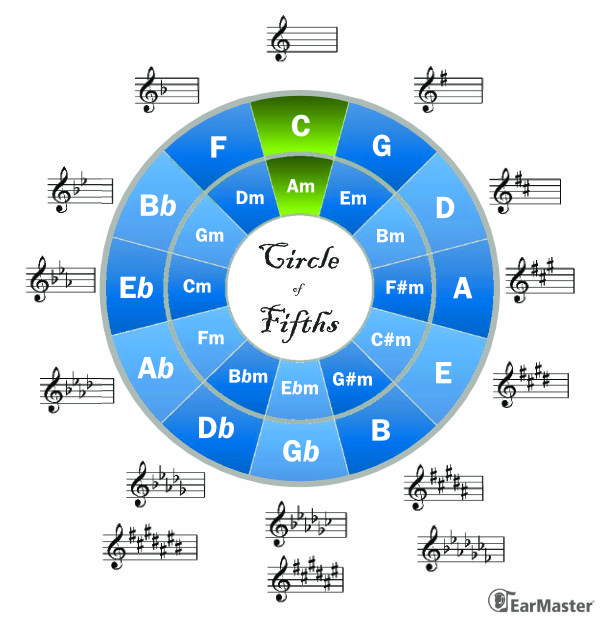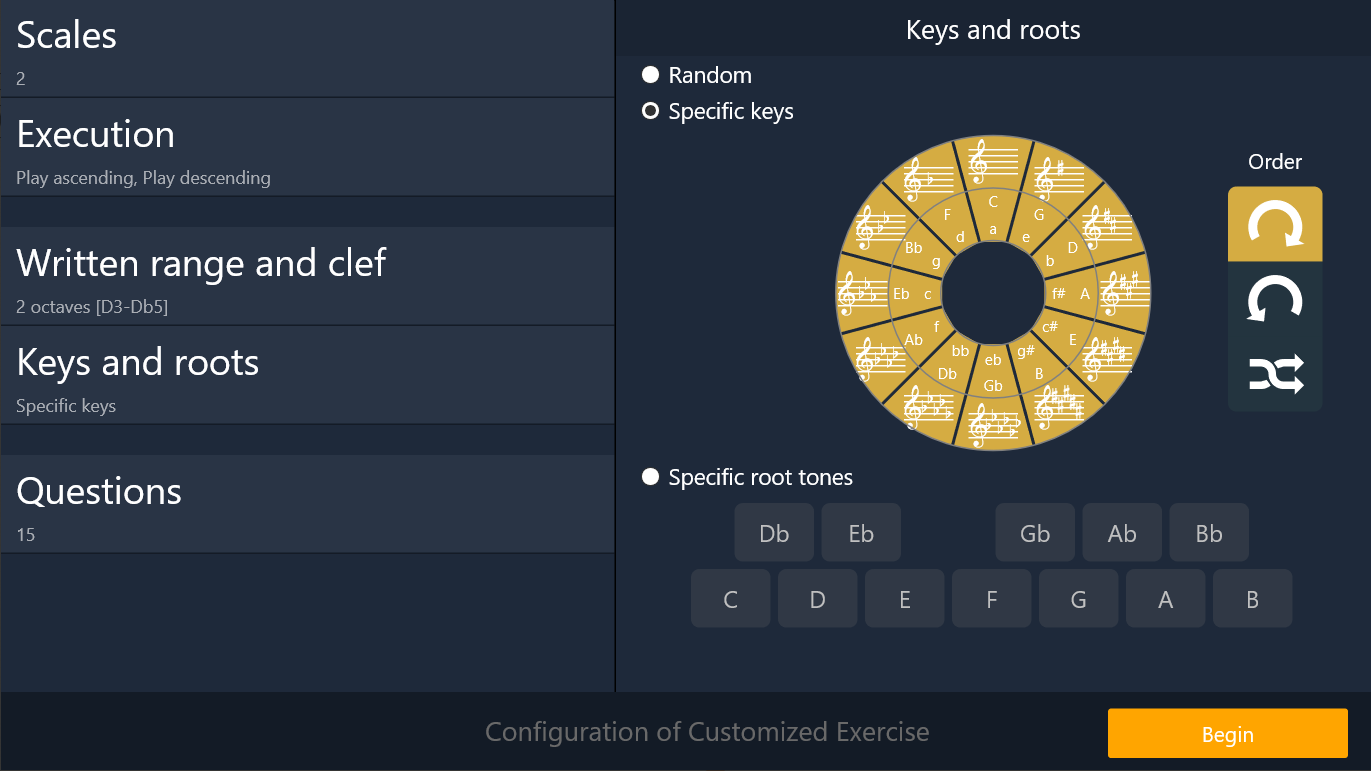What Is the Circle of Fifths?

The circle of fifths is a diagram that shows the relationship between musical keys. It's called the "circle of fifths" because each key is a fifth higher than the previous key.
Starting from C, which is located at the top of the circle, you can move clockwise around the circle to find the next key. The next key is G, which is a fifth higher than C. The next key after G is D, which is a fifth higher than G. If you keep going around the circle in this manner, you'll eventually end up back at C.
Why use the circle of fifths?
The circle of fifths is important because it helps you understand the relationships between keys and the chords that are commonly used in those keys. For example, the chords in the key of C are C, Dm, Em, F, G, Am, and Bdim. If you move clockwise around the circle to the next key, G, the chords in that key are G, Am, Bm, C, D, Em, and F#dim. You'll notice that the chords in the key of G are mostly the same as the chords in the key of C, but they're in a different order and a few of them are different.
Here are some practical applications of the circle of fifths:
- Transposing: If you need to play a song in a different key, you can use the circle of fifths to figure out which chords to play. For example, if a song is in the key of C and you want to play it in the key of G, you can use the circle of fifths to figure out that you can play the chords G, Am, Bm, C, D, Em, and F#dim.
- Chord Progressions: The circle of fifths can also be used to create chord progressions that sound good together. You can start with a chord in one key, move to a chord in the next key on the circle, and continue around the circle to create a pleasing sequence of chords.
- Understanding Modes: The circle of fifths can help you understand the different modes, which, simply put, are scales that are based on different starting notes within a key. For example, the Dorian mode is based on the second note of the major scale, and the Phrygian mode is based on the third note. The circle of fifths can help you visualize the relationships between those different modes.
- Harmonic Analysis: You can use the circle of fifths to analyze the harmony of a piece of music. You can identify the key of the piece and then use the circle of fifths to identify the chords that are commonly used in that key. This can help you understand how the piece is structured and how the different chords relate to each other.
The circle of fifths and ear training
The circle of fifths can be a very useful tool for ear training, especially for training the ear to recognize chord progressions and key changes. By listening to the way chords progress around the circle of fifths, you can learn to recognize the patterns that are common to many different types of music. For example, you might notice that the chords in the key of C are often followed by the chords in the key of G, and that this progression creates a sense of resolution and forward momentum.
You can also use the circle of fifths to practice identifying different chords by ear. You can listen to a chord progression and try to identify which chords are being used, and then use the circle of fifths to understand the relationships between those chords.
In addition, the circle of fifths can be used to develop a sense of relative pitch. By practicing singing or playing scales and arpeggios around the circle, you can learn to recognize the interval relationships between different notes and chords.
Overall, the circle of fifths can be a valuable tool to improve your ear training skills and develop a deeper understanding of music theory, so make sure to have one in your guitar or violin case, on your desk, or anywhere else where you might need it - at least until you have memorized it!

Training with the circle of fifths in the EarMaster app
You can train using the circle of fifths in most of the ear training and sight-singing exercises of the EarMaster app on iOS, Android, Windows and Mac.
Simply choose Customized Exercise in the home screen, then pick the keys of your choice on the circle of fifths under "Keys and roots" and choose whether the keys will be changed following the circle of fifths (clockwise) or the circle of fourths (counterclockwise).
You can use that option when training with intervals, chords, scales, progressions, and melodies.
Happy ear training!





